What is RPE?
Before we talk about what RPE you should train at, we need to establish what it is.
RPE stands for rate of perceived exertion. RPE is a SUBJECTIVE difficulty rating of a set you performed.
RPE was originally conceived by Dr. Gunnar Borg decades ago. It’s original form ranged 6 to 20. 6 representing no exertion and 20 representing a maximal effort. Everything else is somewhere between these numbers. 6 to 20 might seem like a weird range to use. It was inititally designed to represent the normal range of heart rates (around 60 to 200 bpm).
Mike Tuchscherer, a well-known and extremely respected powerlifting coach modified the RPE scale to run from 0-10. This is the scale that is used by the vast majority of lifters today. RPE is judged by considering how many more reps you could have gotten in a specific set if you took that set to failure. Often also refferred to as Reps in Reserve (RIR).
The most common interpretation of the RPE scale is RPE = 10 – (RIR)
10 – Couldn’t have done any more reps and wouldn’t have been able to add any weight to the bar on the last rep (MAXIMAL EFFORT)
9.5 – Could possibly have done 1 more rep or been able to add weight to the bar for the same reps.
9 – Could definitely have done 1 more rep
8.5 – Could possibly have done 2 more reps
8 – Could definitely have done 2 more reps
7.5 – Could possibly have done 3 more reps
7 – Could definitely have done 3 more reps
6.5 – Could possibly have done 4 more reps
6 – Could definitely have done 4 more reps
and so on.
Sometimes you’ll see people group all RPE below 6 into one group (SUB6). When we start to get 5-6+ reps away from failure, being off by a rep won’t really affect the hypertrophic (muscle building) stimulus or the fatigue generated by performing that set.
On rarer occasions I may specify an RPE 5-5.5 (usually in a deload) but I don’t specify anything lower than that. Trying to judge exactly how many reps you are away from failure when you’re 6 or more reps away is pretty difficult anyway, even for advanced lifters.
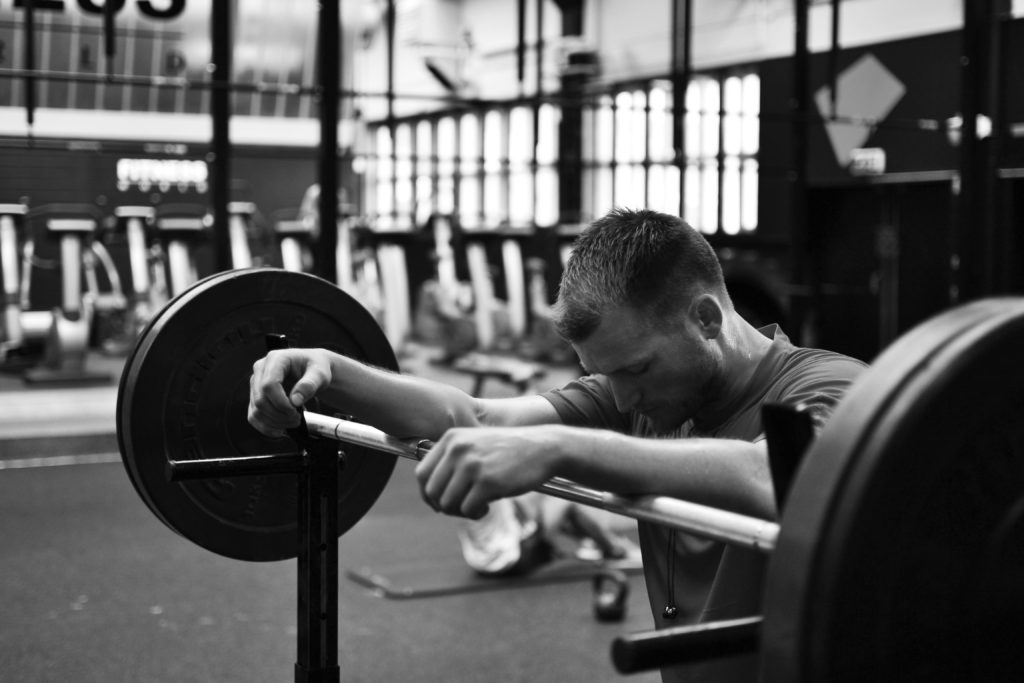
Why Use RPE?
RPE is useful to regulate the specific training effect that you want to get from a set. The set should be considered in the context of your entire workout. The workout should be considered in the context of a training week (microcycle) which fits into a whole block (mesocycle). The training effect being the muscle/strength building stimulus in comparison to the fatigue generated.
Sets taken to a certain RPE (usually considered to be about RPE 6 or above, 4 RIR or lower) are most effective at producing a muscle building stimulus. Quantifying training volume is usually achieved by counting the number of “hard sets” in the 5-30 rep range.
There’s an intensity threshold above which hypertrophy training is most effective. You can’t just bench the bar for a million reps if your max is 200kg but the threshold is still pretty low. This threshold is thought to be somewhere between 20% and 40% 1RM (1 rep max). This isn’t saying that sets 6 reps away from failure or below 20% of 1RM don’t contribute to hypertrophy AT ALL.
The first few reps of a higher rep (10+) set are not thought to contribute very much to hypertrophy. They fatigue the slower twitch muscle fibres so that in the later reps the more fast twitch fibres can get stimulated. Faster twitch fibres have more potential for growth and get stimulated less when doing day to day activities.
So for example if someone was to take their 20RM , do many sets of 3 and never get within 10 reps of failure I think it would be hard to argue that they would grow much. They could theoretically do a lot of volume above the intensity threshold but they wouldn’t be close enough to failure.
You need disproportionately more sets with loads below 20% or below RPE 5-6 to get a similar stimulus. This leads to a lot of junk volume and is an inefficient way to build muscle. It’s not a strength stimulus either as the intensity is far too low.
This isn’t an issue with heavier loads, around 80-85%+ 1RM. It seems at some point around this range even singles are at a high enough RPE to lead to some growth, though that wouldn’t be the most efficient way of growing muscle. Check out my article on Myo reps for more detail on effective reps.
This method would get a good strength stimulus in a poor way for hypertrophy. If you did a whole bunch of singles at 80% of your 1RM you’d get a decent strength stimulus,the hypertrophy stimulus would be poor and you’d be using a very inefficient method. This is because while the weights are heavy enough for a strength stimulus, 80% 1RM is somewhere around an 8-10 rep max for most people. You’d have to do a massive amount of singles/take short rest periods to get close to failure with this weight. The same hypertrophic stimulus could be gotten doing a few sets closer to failure, instead of starting so far from it.
Hard sets (RPE 6+) in the 5-30 rep range seems to be the best indicator for volume when above the intensity threshold . Virtually all the work someone training for hypertrophy does would normally fall in this range anyway.
This applies on an exercise to exercise basis (quad stimulus would be different on a leg extension than on a squat when other factors are matched). This doesn’t apply as much when comparing rep ranges far out side of this range (singles or sets of 50 for example). My article on myo reps explains the “effective reps” concept which should clear this up a bit.
Fatigue and How it Relates to RPE
Fatigue is very important to consider along with RPE. Any sort of stress that you put on your body will generate fatigue. There’s several types of fatigue but for the purpose of stopping this article becoming too complicated I’m going to talk about fatigue as a broad concept.
RPE is probably the biggest factor determining how fatiguing an individual set is. We need SOME fatigue otherwise there would be no stimulus (no gains), but not too much. To be able to overload and apply enough stress to your body to grow bigger/stronger you can’t allow fatigue to climb too high. The fatigue to stimulus ratio differs depending on what you do. In an ideal world we want as much stimulus with as little fatigue as possible.
If the RPE climbs too high for too long you’ll see decreases in performance due to fatigue. You won’t physically be able to perform at a level where you can train hard enough to overload and provide a sufficient stimulus to grow muscle/get stronger.
On some days you can be fairly fatigued and still be doing fine in the context of your entire training program. Though this should be planned for and not happen by accident, either on specific day(s) during your training week or right before a deload.
Progressively overloading (doing more) over time is the key to getting bigger muscles and getting stronger.Overload isn’t a single value it’s a range. With repeated exposure and no real training breaks the bottom of this range will creep up. You can’t repeat the exact same workout with the exact same weights, reps ,sets etc forever and expect to grow indefinitely.
This is why it’s probably a good idea to try and design your training so that it’s stressing your body more every time you repeat the same workout. This may not be possible every time but the goal should be to do this as often as possible to maximise progression.

In an ideal world we could just add weight/reps/sets to our workout every 1-2 workouts to progress, if you’re a newer lifter this may actually be what you’re able to do.At a certain point this stops working. Eventually you have to start considering longer time frames for progression.
Early intermediates might be able to add 2.5kg/5lbs to the bar every week on some lifts, at some point this becomes every 2-3 weeks, then every mesocycle (usually 4-8 weeks).
At sufficiently high levels of advancement it may take multiple mesocycles of training just to add 2.5kg/5lbs to a working set.
A mesocycle might look like this:
Wk 1 : Bench press 100kg/220.5lbs 5*5 final set RPE 6
Wk 2 : Bench press 102.5kg/226lbs 5*5 final set RPE 7
Wk 3 : Bench press 105kg/231.5lbs 5*5 final set RPE 8.5
Wk 4 : Bench press 107.5kg/237lbs 5*5 final set RPE 10
Wk 5 : Bench press 110kg/242.5lbs 4,4,3,3,2 final set RPE 10
This person probably wouldn’t have been able to repeat their week 4 performance in week 5.
The cumulative fatigue generated by the weeks up to week 4 was large enough that the lifter couldn’t recover (match performance) by the next week. As the lifter didn’t recover, they wouldn’t have been able to produce a greater stress than they did in week 4 without adding a lot of sets (of lower reps than usual) and digging an even bigger recovery hole.
This isn’t a smart strategy for long-term progression.
It would have made more sense for them to deload this week if they had anticipated this by using previous trends in their training. They could have also used a different progression strategy. In the real world we aren’t all robots who only have to train and recover. Life inconsistencies (such as sleep and nutrition) and stressors will mean that our training isn’t the only variable affecting performance. This is why autoregulation is so important, however this is still a useful model to illustrate my point.
I like to increase RPE from week to week, past the novice stage you don’t see measurable consistent increases in performance every workout. By increasing the RPE that you train at you can overload every week and do slightly more as long as you manage fatigue and progression correctly. As long as performance doesn’t DECREASE (not recovered) significantly from week to week we can still overload using this method.
If performance decreases slightly you can probably still overload but it may be a good time to deload to avoid digging a massive recovery hole. How advanced you are is dependant on how fast you can progress, NOT how strong (in absolute terms) you are.
An early intermediate lifter might be able to have a similar performance in the next mesocycle using 5kg/10lb heavier weights in each week in comparison to the previous mesocycle. More advanced lifters may only be able to add half as much weight over twice as long (say 10 weeks). They would effectively progress 4 times slower. This may sound very slow but for a very advanced drug free lifter to add 12.5kg/25lbs to their bench press WORKING weights (their max would have gone up more) in around a year is great progress.
Fatigue generation seems to be somewhat exponential with proximity to failure. These graphs show possible relationships between RPE and fatigue if it was linear (Graph 1) or exponential (Graph 2).
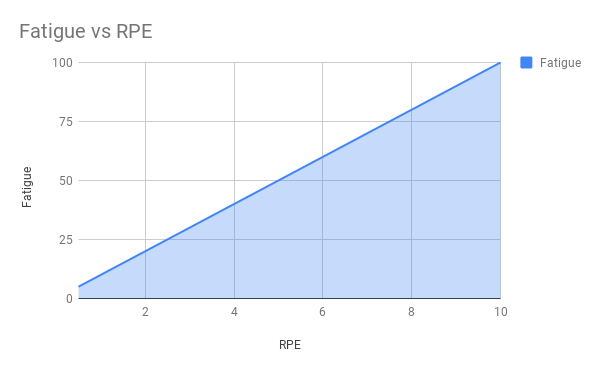

GRAPH 2 ISN’T EXACTLY HOW IT WORKS. We cant quantify it that accurately and the rise of the curves isn’t that dramatic. However the relationship between Fatigue and RPE looks more like graph 2 (exponential) than graph 1 (linear).
A set to RPE 5 would not be near hundreds of times less fatiguing than a set to RPE 10 when other variables such as volume and intensity are equated. The point here is to show that the closer you get to failure, the more fatigue an extra rep adds and it’s not linear. In my experience in most cases doing multiple sets at RPE 7 would generate less fatigue than doing slightly fewer sets at RPE 9. There would be a similar hypertrophic stimulus if the effective reps are similar.
I’m NOT saying that no individual will ever respond particularly well to going to failure. We are talking about averages as you have to when discussing broad concepts. Extremely advanced lifters may need higher RPEs on average due to the fact that they need a massive disruption to progress well, the vast majority of people reading this won’t be very advanced.
Due to accumulating less fatigue but a similar stimulus staying away from RPE 10 all the time leads to better long term progression if you’re pushing your body’s ability to recover.
We could do many sets at very low RPEs to accumulate a lot of volume with little fatigue accumulation. Many successful strength programs do this including many of the programs by infamous strength coach Boris Sheiko. This works for strength as you have enough heavier lifts in to get the strength stimulus and practice technique (strength is a skill). It’s not the best method for hypertrophy as you’re essentially accumulating a lot of “junk volume”, sure you can build some muscle but it’s very inefficient. Another issue isthat these take absolutely ages to do (4+ days a week, 3 hour+ session length are typical) and most people can’t afford to spend that much time in the gym. It’s very time inefficient.
For those looking to absolutely maximise hypertrophy there is probably a benefit to going to failure at least occasionally. I usually save RPE 10s for the end of a training block right before a deload on compound lifts that are safer. I also use them often for single joint isolation movements even at the start of a mesocycle as the fatigue generated from these movements is so low in comparison to multijoint compounds.
Issues with RPE
There are issues with RPE, most stem from the fact that RPE is subjective. It’s not as uncommon as you’d think to scroll through Instagram and to see a lifter having what appears to be a spiritual awakening for them to then rate the set that they performed at RPE 7.
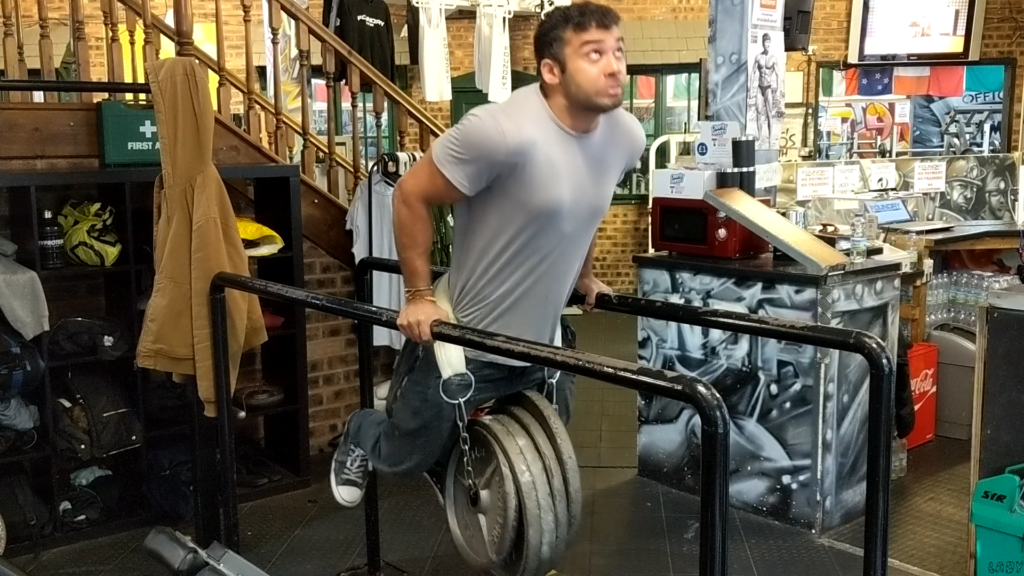
You can also go completely the other way, certain lifters aren’t confident in their abilities/don’t realise how far they can push themselves and chronically undershoot their RPE. This subjectivity can definitely be an issue, however for those whom have a good degree of self-awareness and don’t let their egos affect them too much RPE is great tool when used correctly.
You don’t have to get it perfectly spot on all the time, if you’re supposed to do a triple at RPE 7 and it ends up being RPE 7.5 it’s not the end of the world. We only start to get to the point where it would noticeably affect your training if you’re off by at least a point on many of your sets. If you slightly misjudge the occasionally set it will have very little effect.
The lower the RPE (higher RIR) you’re at the harder it is to judge. I’m fairly experienced with using RPE, I’ve used it for several years now. Honestly deciding whether I’m 5 or 6 reps away from failure is a bit tricky sometimes. Though It shouldn’t take most people that long to get to the point where they’re comfortable judging RPEs at 7 or above (3 reps from failure).
If you’ve never used RPE before I’d recommend being conscious of it and practising rating the sets you’re already doing even if it doesn’t affect your programming. RPE is a useful tool to have . Beginner lifters will struggle a bit initially as they learn what their body is capable of. Like anything, as you practise you’ll become better at it.
Considerations When Choosing the RPE You Should Train At
Injury Risk
Higher RPEs increase the risk of injury, even if you pride yourself on keeping good form. Exercises where it’s possible to sink deeper than your usual range of motion shouldn’t be taken very close to failure without proper safety measures. For example, during weighted dips if you don’t usually sink all the way down, pushing near failure can cause you to accidentally go too deep. As you’re not used to training that ROM (Range of motion) this could lead to a strain or even a tear.Pushing high RPE can lead to form breakdown, this can reaggravate old injuries or even create new ones.
When you’re injured you can’t train properly/at all. I’d go as far to say that when you get more advanced one of the most important factors for progression is figuring out how to train hard without getting injured.
Sometimes it’s not worth going for that extra rep. In the grand scheme the extra rep will make very little difference to your gains but will sometimes significantly increase the risk of injury.

Exercise frequency
How often you train an exercise can also affect injury risk, exercises that you perform with a high frequency will use the same parts of muscles and connective tissue. High frequency combined with large enough volumes can lead to overuse injuries. With higher frequencies of 3+ times a week it can be wise to not push the RPE too much unless the stress from volume, frequency and intensity that you use isn’t particularly high.
Exercise variation is a good way to get around this. It doesn’t even have to be a massive difference. Changing hand position on pressing exercises by a few fingers, or moving your feet in/out on leg exercises with slight changes in foot positioning can accomplish this well.
Recovery factors
Poor nutrition/low calories, poor sleep quality/quantity and high stress levels will all negatively affect recovery. Age is another factor that affects how fast you recover, in general older lifters will take longer to recover from similar volumes than younger lifters.
If you’ve made the personal choice to take PEDs this will benefit recovery.
If you find yourself in a period of life where you have limited time to sleep and/or you are under high life stress you may benefit from reducing the average RPE you train at by 0.5-2 points. Which side of this scale you use will depend on individual circumstances.
The stimulus your body receives from training will be slightly less due to reducing your average RPE. However due to the increased stress from life, training stress has to be decreased to avoid overreaching and eventually regression. Most people design their training to push their body to progress at a quick rate without these extra stressors. Failing to modify that same volume, intensity, frequency and relative intensity (RPE) will lead to under recovery.
How fatiguing each exercise is
The affect that ROM (range of motion) has isn’t black or white. If you decrease your ROM by widening grip/stance you’re moving the bar over a shorter distance and doing less overall work therefore putting less stress on your muscular system.However this also has the risk of aggravating connective tissue more.
Have you ever tried a really wide squat stance/ bench grip width as you thought it would be easier due to the shorter ROM? You squat down to parallel only to feel as if your hip is about to explode. This is something that you’ll have to pay attention to on an individual level to see how alterations to exercises affect you on an individual basis.
The more proficient you are at any given exercise, the more fatiguing it is. When you first do an exercise your nervous system hasn’t learnt the movement pattern and can’t use your muscles in the most efficient way to move the weight. As you develop your technique over months and years this changes, with any given level of muscle mass you can move more weight.
That same exercise at the same relative intensity (RPE) will be more fatiguing as you get more proficient at it. This doesn’t mean you can initially use dangerous form on an exercise, please don’t do an exercise if you can’t perform it safely. Though if you were to make this mistake, as your form improves it may get less fatiguing due to the fact that you’re not putting your body in compromised positions under load.
Big compound movements that use more muscle mass tend to be more disruptive and cause more stress than those that use less/smaller muscle groups. The spinal erectors (lower back muscles) are particularly sensitive. Exercises that rely heavily on these muscles are especially fatiguing. Deadlifts and close variations tend to be particularly fatiguing. Most people who aren’t built very well (long torsos and short limbs) for these lifts tend to struggle with too much volume/too high of an RPE on these exercises.

I tend to not push the RPE too high on deadlifts, doing this negatively affects at least the next few days of training for most experienced lifters. Sometimes it can mess with your training for over a week. Very few strong deadlifters train the deadlift more than twice a week, one of the sessions is usally easier too. I’ve never heard of a very strong lifter training the deadlift HARD more than twice a week. I’m sure they exist but they’d be extreme outliers.
The vast majority of lifters would benefit more from adding other less fatiguing posterior chain exercises on a third day and not increasing the frequency of deadlift variations over twice a week. Some examples would include back extensions, hip thrusts and leg curls
I’ve experimented with conventional deadlifting every 3 days (sumo tends to be easier to recover from due to back angle). The only way this was successful on lifters past the novice stage was if the volume, intensity and RPE were kept at a low/moderate level. I didn’t go past RPE 7.5 and this wasn’t even every session, most were RPE 6 at most. High freqeuncy deadlifting was mainly used to improve technique, with the volume being achieved with other less fatiguing exercises. I can’t even say 3x a week was better than 2x a week, even if it went well it seemed to be just as good at best.
Round back deadlifts tend to be even more fatiguing than neutral back deadlifts. Some exercises are so easy to recover from that they can almost always be taken to failure. They induce little fatigue and are usually done at the end of a session so will have no affect on the workout they’re being performed in or on future workouts.
Usually these are exercises involving small muscles groups that recover very quickly such as delts and arms. It would be difficult to push side delt training so far that it negatively affects your next workout. You would have to go out of your way to do it. I’m sure it’s possible if you did 15 sets a day every day, but at that point the volume (and the fact that you’re insane) is the major factor. Whether you go to failure or stop a couple reps short isn’t going to matter.
Level of advancement
Someone with a bench press max of 500lbs will be far more fatigued benching 400lbs for 5 at RPE 7 than someone with a max of 200lbs benching 160lbs for 5 at RPE 7.
The relative intensity is the same (80% for 5 at the same RPE) but there is a significant difference on fatigue accumulation.
Bar speed – I’m not aware of any scientific evidence directly supporting this however I feel this is something to consider. There is a large variation in rep speed on an individual basis. One person can make a 90% single at RPE 7 look like a warm up, someone else will make it look like a max attempt and then be able to grind out 3 more reps.
Technique and proficiency at a lift can play a part in this and actually contribute to making a faster rep more fatiguing. However in general if you tend to have to grind reps more than average you’ll accumulate more fatigue, you’ll be exerting effort for longer and may need to slightly adjust your RPEs because of this. There is research showing that faster bar speed leads to better strength gains. I’d speculate that as well as to ingraining efficient movement patterns you’re accumulating less fatigue from grinding less.
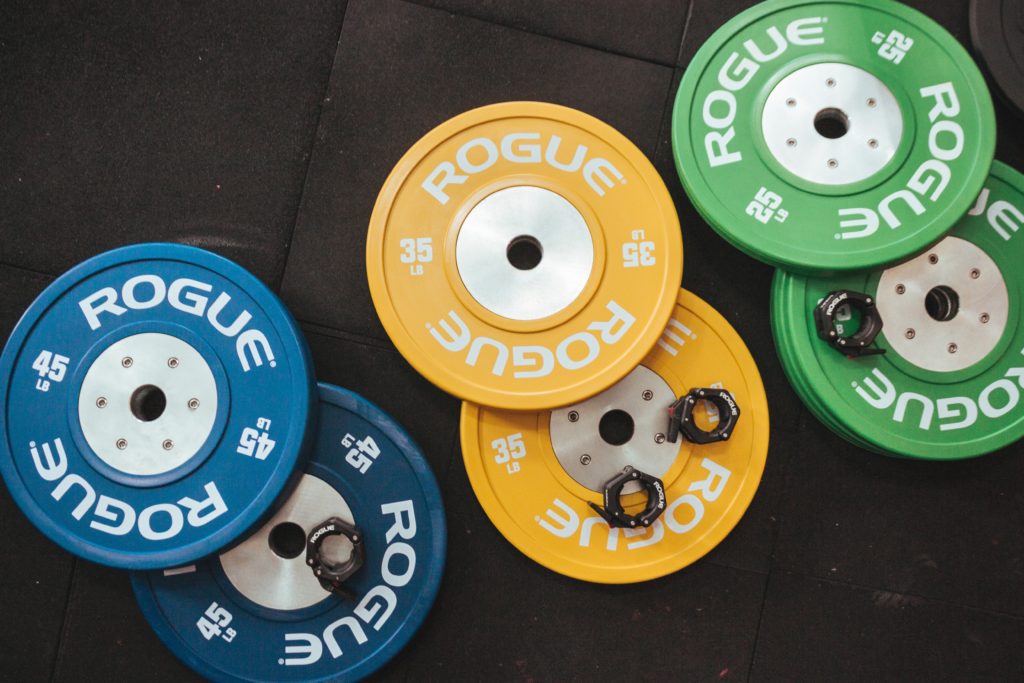
Intra workout fatigue
In any given workout pushing to failure too early on might not be the best idea. Going close to failure (9+ RPE) generates significantly more fatigue than going to a 7-8.5 RPE and will most likely decrease the amount of hard sets you can do.
For example lets say you performed 4 sets at a given load and went to failure, the reps per set may look like:
set 1: 10 reps @ RPE 10
set 2: 8 reps @ RPE 10
set 3: 6 reps @ RPE 10
set 4: 5 reps @ RPE 10
You’ve accumulated 29 total reps and a lot of fatigue because every set was to failure.
Now lets stay in the 8-9 RPE range for every set apart from the final set
set 1: 8 reps @ RPE 8
set 2: 8 reps @ RPE 8
set 3: 8 reps @ RPE 8.5
set 4: 8 reps @ RPE 9.5
You’ve accumulated 32 total reps, 10% more than if you took every set to failure.In addition only the final set was close to failure and you still had a bit in the tank.
You’ve accumulated less fatigue and a similar stimulus for growth.
This allows you to accumulate more volume elsewhere. Or with the same amount of volume you’ll have improved recovery and will make more progress in the long run. When performing multiple compound lifts for the same muscle group in the same session it’s a good idea to stay at a slightly lower RPE on the first exercise. This is so that it doesn’t affect subsequent exercises as much, only going to failure on the final set on the final exercise.
Inter workout fatigue
Pushing the RPE too much in a single workout/ training week (microcycle) on certain exercises and bigger muscle groups is detrimental in the long run.
It leads to enough fatigue buildup to cause your performance to decrease from week to week even if not immediately. When deciding how far to push exercises in any workout the entire training block (mesocycle) should be taken into account.
When performance starts decreasing from week to week and you’re not near the end of your mesocycle (if the goal is volume accumulation) you may have overshot your recovery capabilities. A better idea would be to work at a slightly lower RPE so that your performance would have remained higher for longer with the same number of hard sets.
When you know a period of reduced training stress is coming up (planned deload/break from the gym) pushing the RPE slightly higher in some cases is perfectly fine and maybe even beneficial. You’ll have the time to recover from this extra stress. It’s probably not the best idea to push it too high if it’s in the middle of a mesocycle. You’re decreasing the room you have to progress in future weeks.
Let’s say halfway through your mesocycle you have a few extra off days from the gym due to life commitments and you absolutely destroy yourself in the gym prior to that. You figure, “I’ll be able to recover with all this extra time off, why not?”
You might struggle in the following 2-3 weeks to progress beyond that “destruction week” and may need to take an early deload.
Extra rest days can be used to allow you to perform at a higher level for longer, however at this point you’re essentially lowering your average weekly volume. Depending on the goal of your training block this may not actually be beneficial to you since you’re not accumulating as much volume in any given time frame.However the drop in fatigue may allow you to display your new strength and hit prs in the next week.
This method can be used productively, if you take extra rest days at the same point in every mesocycle you can compare from one to another to see if performance is increasing.
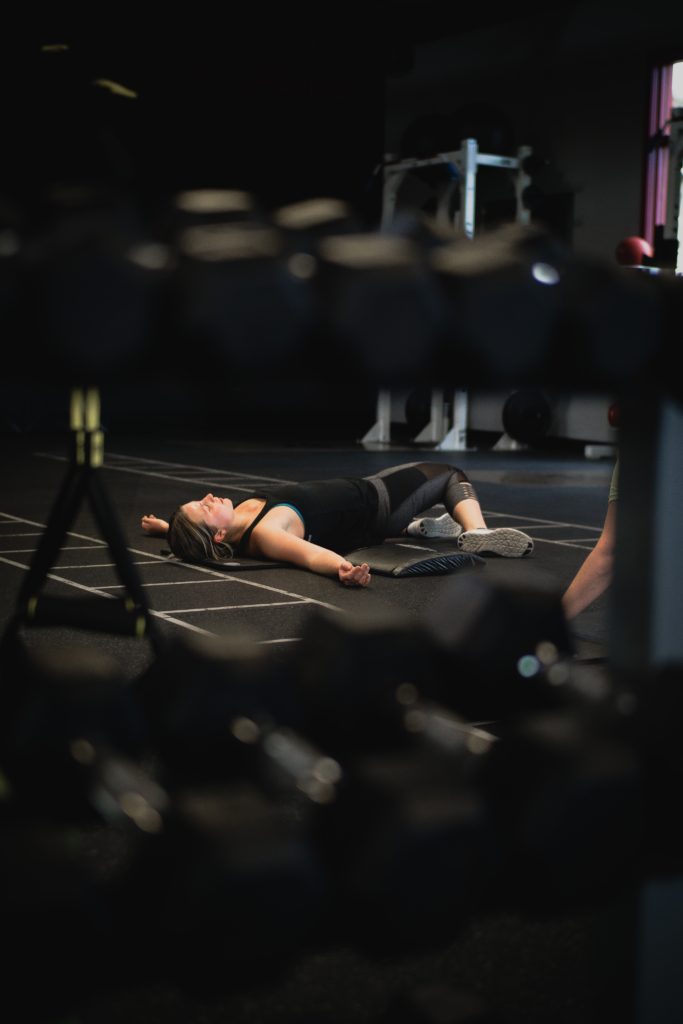
Lifter Psychology
This is an important area that people often forget to take into account. A slightly less effective program that a lifter fully buys into will get a lifter better results than an “optimal” program that they don’t.
Some lifters (like me, though I’ve gotten better about it) yearn to push themselves to failure, they don’t feel like they’ve trained if they haven’t. In this scenario it could be beneficial to see where you can “get away” with going close to failure the most and minimise the negative effects that going to/close to failure has.
Training less frequently, at a slightly lower volume and including more low stress movements are things to consider to allow higher average RPEs. It’s also worth considering how accurate the lifter is at rating RPEs. By watching them train and comparing it to their other performances you can start to get an idea about whether they consistently over or under rate their RPEs. If they do either you can adjust their given RPE accordingly to get what they’re actuall training at closer to what you’d like them to be doing.
How technical the lift is – More technical lifts with movement patterns you want to develop and become proficient at should not be taken to significant form breakdown. If you do you’ll be ingraining poor movement patterns and will actively be taking away from becoming proficient at that lift. The RPE that this happens at will differ tremendously. Often very advanced lifters are so proficient that good technique is their strongest position and they wouldn’t be able to grind out another rep even if their form broke down.
Less experienced lifters may be able to execute good reps up to RPE 6 at a given load. Even though they can grind out 4 more reps, it might not be safe or prudent to do so if their form breaks down significantly.
Alterations to RPE on a Deload
The purpose of a deload is to maintain as much of your fitness, whatever you’re training for (if you’re reading this probably strength and/or muscle) while dropping as much fatigue as possible.
Ideally you want to lift heavy enough to maintain a strength adaptation, do enough volume to maintain your muscle mass while also dropping as much fatigue as possible.
A good way to do this after decreasing volume and/or intensity appropriately is to drop your RPE. Usually I like to limit RPEs to around 5.5-6.5 on compounds, maybe 7 on the very last set per muscle group if the compound isn’t that fatiguing.
However I manipulate the RPE, it’s always lower than what it would be in the main training weeks. The only real exception is easy to recover isolation exercises, I think the main reason to drop the RPE on those is just for psychological relief. Since there would be less sets of them this may not even be necessary as the lifter may want to feel like they’re t least pushing something.
Practical Recommendations for What RPE You Should Train At
There’s a lot of information above so some practical recommendations for what kind of RPEs I generally program for my clients and myself will be useful. These are for a hypertrophy/general strength phase where you’re training to become bigger/stronger and not when you’re trying to peak/display your strength.
Keep in mind that these are general guidelines based on these factors:
Intermediate/Advanced lifter (not novice)
Drug free
Trying to progress reasonably quickly (higher volumes) in a sustainable way
No significant extra life stress
Frequencies of around 2-3x per week
Compound free weight movements that ARE NOT the final compound using those muscle groups– RPE 6.5-8.5 This is a broad range, and would further be broken down depending upon which microcycle (training week) of the mesocycle (training block) we’re in.
At the very start of a mesocycle, most of the RPEs would be towards the lower end of this range. In most cases I like the RPEs to increase on average as the training block continues. In the final week they’re at the upper end of this range.
When training at higher volumes and performing multiple sets on an exercise that isn’t the last for a muscle group, even training 2 reps away from failure tends to accumulate a decent amount of fatigue. In the final week of training before the deload we can afford to push total volumes and RPEs slightly higher (8-8.5 range) because the deload will drop fatigue.
However we don’t want to push it so high that it affects the rest of the workout or has a significant effect on any workouts left in before the deload.
Final compound movement involving a muscle group – RPE 7.5-10, the lower end of this range would be used at the start of a training cycle to make sure there isn’t too much fatigue accumulation that affects subsequent workouts. The higher range would be used on the final set towards the end.
Not every exercise would be taken to complete failure either. Some exercises aren’t worth the risk of pushing to failure (such as heavy stiff leg deadlifts). Leaving a whole rep, or just a little bit of room in the tank is the smartest option.
For example if a high bar squat is the final compound on a lower body day, due to the systemic fatigue generated (if there is another lower body workout later in the week) and risk of injury, even in the final week of a meso you may leave a little in the tank (RPE 9-9.5). You can always get more quad stimulus with something like a leg extension.

Many deadlift variations- 5-8.5. I tend to program Deadlift and block/ pull variations a bit differently. As mentioned above movements that heavily use the lower back (spinal erectors) tend to cause higher systemic fatigue (especially if you pull with a rounded back).tThe lower back tends to be slower to recover than other muscle groups. I favour using lower RPEs on the conventional deadlift and close variations due to this reason.
Exceptions to this include variations where hypertrophy is the goal (like RDLs) which tend to be easier on the lower back due to loads used and lack of rounding.
I tend to think of things like sumo deadlifts or partial deadlifts such as 4″ or higher block and rack pulls slightly differently to conventional and close variations. This is due to the fact that you’re less bent over. Even if the weight used is higher there is less stress on the lower back.
I don’t program these towards the end of the workout because of how much fatigue they generate. Attempting them in too fatigued of a state is asking for injury. An exception may occur with light technique work to help reinforce form since RPE is low .
Isolation movements – RPE 10 on the final set per workout, RPE 8-9 on earlier sets. There’s rarely a reason to not take these to failure, in general they’re safer movements and the fatigue generated from taking these movements to failure won’t affect future workouts. I now almost always utilise myo reps for these.
Prior sets are limited to RPE 8-9 to allow the total workload achieved to be as high as possible. Exceptions may occur with larger muscle groups such as quads/chest while training at a higher frequency (3+ days a week).
I’ve touched on a lot of the factors to consider when thinking about what RPE you should train at. These guidelines are a good place to start but individuals may have to tweak this based on how they choose to train and their individual response to training.
If you think you’re pushing too hard and aren’t recovering that well I’d recommend that you start on the lower end of my recommendations. It’s usually better to start a bit conservatively than to push too hard right out of the gate, there’s time for that later.
If I had realised this earlier I would’ve made better long term progress.I think you will too.
Interested in coaching to take your progress to the next level?
